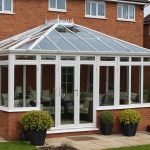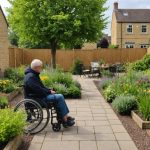In the gorgeous city of Glasgow, with its rich history and intricate architecture, many of the houses have stood for centuries, bearing witness to a bygone era. However, while these old homes have undeniable charm and beauty, they often lack the energy efficiency of modern buildings. As we move further into the 21st century, it’s crucial that these homes are upgraded to become more energy efficient, both for the sake of our planet and the wallets of the homeowners.
Making the Switch to Energy-Efficient Lighting
One of the simplest, yet most effective ways to improve energy efficiency in older homes is to switch to energy-efficient lighting. Traditional incandescent bulbs may create a warm ambiance, but they are significantly less energy-efficient than contemporary lighting options.
A voir aussi : Is It Possible to Legally Transform Commercial Properties into Residential Spaces in Swansea?
Light Emitting Diodes (LEDs) and Compact Fluorescent Lightbulbs (CFLs) are excellent options to consider. LEDs, in particular, are becoming increasingly popular due to their long lifespan and minimal energy consumption. They can last up to 25 times longer than traditional bulbs and use up to 75% less energy.
Additionally, consider installing dimmer switches and motion sensors in rooms that aren’t used frequently, such as hallways or bathrooms, to further reduce energy consumption.
A découvrir également : Mastering Renovation Budgeting: A Comprehensive Guide to Estimating Costs for Your Victorian Home in London
Increasing Insulation for Maximum Efficiency
Insulation is a crucial aspect of an energy-efficient home. Without proper insulation, a significant amount of heat can escape through the walls, floors, and roof, leading to increased energy consumption and higher utility bills.
In older homes, insulation can often be lacking or degraded, making it an important area to focus on when looking to improve energy efficiency. For example, installing loft insulation can save up to 20% on heating bills, while wall insulation can save up to a further 35%.
Insulating your old home can be a substantial project, but the long-term savings make it a worthwhile investment. Always ensure to hire a professional to carry out the work to guarantee it’s done correctly and safely.
Upgrading Windows and Doors
Windows and doors play a key role in maintaining the temperature balance within a home. In many old buildings, these features can be a major source of heat loss due to lack of double-glazing or improper sealing.
Investing in double-glazed windows and well-sealed doors can significantly improve a home’s energy efficiency. Double-glazed windows consist of two layers of glass with a gap in between, forming an insulating barrier that keeps heat in. On average, homeowners can save up to £115 per year by replacing single-glazed windows with A-rated double-glazed ones.
When it comes to doors, look for those that have a good insulation rating. In addition, consider draught-proofing by using weatherstripping around doors to prevent heat loss.
Installing a Smart Thermostat
Smart thermostats are a modern solution to energy efficiency that can easily be integrated into an old home. These devices allow precise control over your heating and cooling system, enabling you to adjust the temperature from your smartphone or tablet.
With their advanced algorithms, smart thermostats learn your lifestyle habits over time and adjust the temperature accordingly. This means that the heating can be turned down when you’re not at home, or turned up just before you arrive, maximising comfort while minimising energy use.
According to studies, using a smart thermostat could save you up to 23% on your heating and cooling costs every year.
Investing in Solar Panels
For homeowners who wish to make a significant commitment to energy efficiency, installing solar panels can be a valuable choice. Although the initial cost is high, solar panels can produce a substantial portion of a home’s electricity needs, drastically reducing reliance on the grid and lowering energy costs in the long run.
In Glasgow, where sunlight can be a rarity, solar panels are still a viable option. Modern solar panels are capable of generating power even on overcast days. The energy produced can be used immediately, stored in an on-site battery for later use, or even sold back to the grid, creating a potential income stream.
Remember, upgrading an old home for energy efficiency is not just about saving money on bills. It’s about preserving these beautiful buildings for future generations while doing your part to protect our precious planet.
Integrating Low Carbon Heating Systems
Exploring low carbon heating solutions is another great way to enhance energy efficiency in old homes. Traditional heating systems, such as gas or oil boilers, can be high in carbon emissions and less efficient than modern alternatives. Low carbon heating systems, like heat pumps and biomass boilers, can provide a more economical and eco-friendly solution.
Heat pumps are devices that extract heat from the environment and increase its temperature before supplying it to your home. There are two main types: air source heat pumps (ASHPs) and ground source heat pumps (GSHPs). ASHPs extract heat from outside air, while GSHPs take it from the ground. Not only do heat pumps reduce carbon emissions, but they also cut down on energy bills.
Biomass boilers are a renewable energy source that utilise organic materials such as wood pellets or chips to generate heat. They have the potential to reduce both energy bills and carbon emissions.
To maximise the benefits of these heating systems, it’s essential to pair them with a well-insulated home. Remember, professional installation is necessary to ensure optimal performance and safety.
Implementing Secondary Glazing in Windows
For homeowners who want to improve energy efficiency without compromising the aesthetics of their old homes, secondary glazing is a fantastic option. This involves fitting a discreet, second layer of glass inside your existing windows. It provides the benefits of double-glazing, including better insulation and reduced noise pollution, without altering the external appearance of the house.
Secondary glazing is particularly beneficial in "listed" or "conservation" properties where altering the original windows may not be allowed. It provides a significant improvement to heat retention, reducing the need for heating and thus lowering energy bills.
Remember, secondary glazing should be installed by a professional to ensure the best outcome. Also, ensure your chosen product meets the energy efficiency standards set by Homes Scotland.
Conclusion
In conclusion, upgrading an old home for energy efficiency in Glasgow doesn’t have to be a daunting task. It can be as simple as changing your light bulbs to LEDs or as substantial as installing solar panels. It’s about making informed decisions, considering your home’s specific needs, and making the most of available technologies and materials.
From increasing insulation, installing smart thermostats, and integrating low carbon heating systems to implementing secondary glazing, there’s a variety of options to improve energy efficiency. Not only can these steps help you save on energy bills and potentially alleviate fuel poverty, but they also play a crucial role in reducing your carbon footprint.
Investing in these energy-efficient upgrades can contribute to a sustainable future and help in the fight against climate change. As a bonus, it also ensures the preservation of Glasgow’s beautiful historic homes for future generations.
So, whether you live in a quiet cul-de-sac off Niddrie Road or in social housing in the bustling city centre, remember that every little helps when it comes to energy saving. Take that first step today, and embark on your journey towards a more energy-efficient home.












